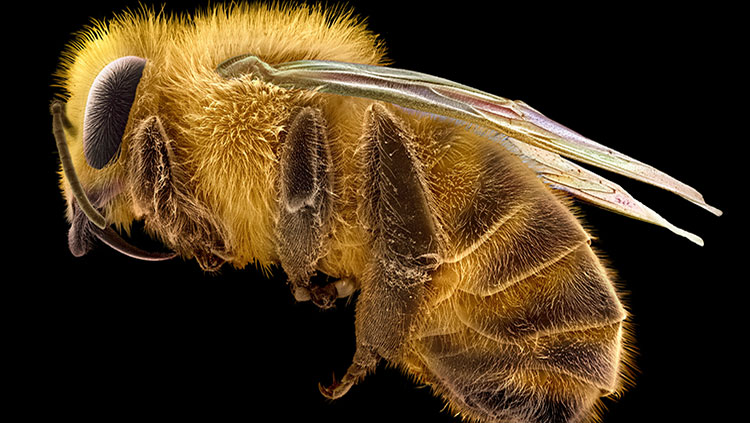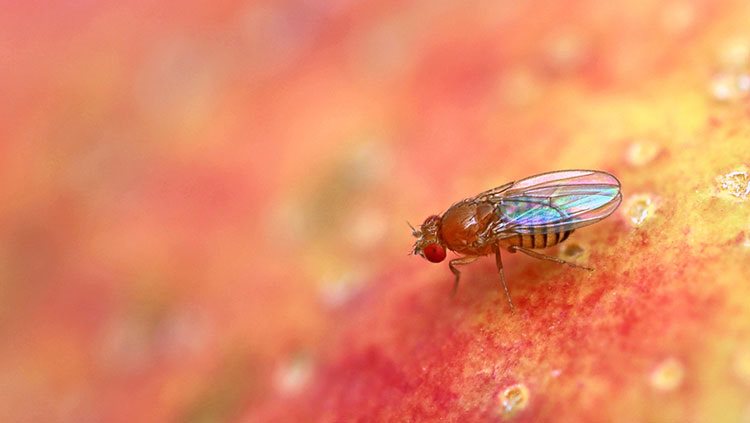Brain Waves Buzzing in the Bee
- Published29 Jul 2020
- Author Calli McMurray
- Source BrainFacts/SfN
The melodies from all the instruments in an orchestra blend to create a symphony. In the same fashion, neurons firing in rhythm with each other produce brain waves. Even though they were discovered in 1929, the role of brain waves remains a mystery. The honeybee may hold the answer.
Based on the speed and number of neurons firing, brain waves exhibit different frequencies. Large, slow-moving theta and delta waves appear during sleep and daydreaming, while small, quick beta and gamma waves appear while concentrating. In the middle, alpha waves emerge in moments of rest and reflection.
Scientists can simultaneously measure both brain waves and the activity of individual neurons in honeybees — a feat not yet possible in humans. In honeybees, neurons in the right hemisphere fire in time with the alpha waves oscillating in the left hemisphere. This supports a hypothesis about humans: brain waves can influence individual neurons and pull them into firing with the group, just like how the rhythm of the symphony corrects out-of-synch musicians. Spreading synchronized activity may help far apart brain regions share information with each other.
CONTENT PROVIDED BY
BrainFacts/SfN
References
Popov, T., & Szyszka, P. (2020). Alpha oscillations govern interhemispheric spike timing coordination in the honey bee brain. Proceedings of the Royal Society B: Biological Sciences, 287(1921), 20200115. doi: 10.1098/rspb.2020.0115
Herrmann, N. (1997, December 22). What is the function of the various brainwaves? Retrieved July 01, 2020, from https://www.scientificamerican.com/article/what-is-the-function-of-t-1997-12-22/
Also In Animals in Research
Trending
Popular articles on BrainFacts.org



















